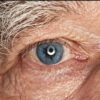ARE VISION PROBLEMS GENETIC?
Genetics plays a role in increasing our chances of developing many medical disorders, including those that impact vision and eye health.
More than 350 eye diseases are attributed to hereditary factors, including albinism, age-related macular degeneration (AMD), colorblindness, strabismus, glaucoma, night blindness and retinitis pigmentosa, refractive errors and others.
We all know that many of our characteristics are inherited from our parents, from our hair and eye colour down to the shape of our nose. They might also pass down certain personality traits or athletic and academic abilities, but what about other aptitudes?
- Studies have shown that myopic (short-sighted) parents are much more likely to have children who also go on to develop myopia. The same applies to parents with hyperopia (long-sightedness) too, as both refractive disorders are caused by inherited genetic markers. In fact, most common vision problems can be attributed to genetics.
If a person has two near-sighted parents, there is a 1 in 3 chance that they will develop myopia. If only one parent is near-sighted, the chances are 1 in 5, and without either parent being near-sighted, the chance of their child developing myopia is 1 in 40. It’s clear to see that your genes have an impact on your need for glasses. The same rule applies for hyperopia.
- GLAUCOMA and age-related macular degeneration are the two main causes of blindness in adults, and research has shown that these are far more likely to be inherited than to occur randomly. Glaucoma is the build-up of fluid in the eye which increases eye pressure and damages the optic nerve, potentially leading to blindness. If you have a family history of glaucoma, you are up to 9 times more likely to develop it yourself. You can decrease your risk of glaucoma by maintaining a healthy weight, limiting caffeine levels to keep eye pressure low, and getting daily exercise.
- AGE-RELATED MACULAR DEGENERATION (AMD) is also, unfortunately, usually a hereditary condition. It is when the small central part of the retina begins to deteriorate, leading to vision loss or wavy and blurred vision. You are 3-4 times more likely to develop AMD if you have a parent or sibling with the condition but, again, there are things you can do to reduce your chances of developing it. Giving up smoking reduces your risk by 2-3 times, as does eating omega-3 acids, and controlling your blood pressure and cholesterol. While you can’t reverse the fact that you have these genes, you can try to reduce your level of risk in other ways.
- STRABISMUS is another eye condition which is thought to be inherited from your parents. This is where one eye is turned in a different direction from the other eye and occurs because the person affected has weaker eye muscles. 40% of patients with strabismus also have family members with the condition. Strabismus can often be corrected with eye surgery, vision therapy or eye patches and, generally, the younger the patient, the better the chances of successful correction.
- RETINITIS PIGMENTOSA (RP) is a degenerative disease of the retina causing vision loss gradually over a long period of time. It also causes night blindness and tunnel vision which are among the first symptoms of RP before central vision is lost too. Research has shown that the condition is caused by gene mutation, which can occur either randomly, or be passed down from parent to child via an X chromosome. If both parents carry the RP gene, their child has a 25% chance of being affected, and an additional 50% chance of being a carrier, even if they are not affected themselves. It’s estimated that 1 in 3,500 people suffer from RP, and countless more are thought to be carriers of the mutated gene in question.
COLOR BLINDNESS (color vision deficiency) is the decreased ability to see color or differences in color.It can impair tasks such as selecting ripe fruit, choosing clothing, and reading traffic lights. People with total color blindness (achromatopsia) may also be uncomfortable in bright environments and have decreased visual acuity.
The most common cause of color blindness is an inherited problem or variation in the functionality of one or more of the three classes of cone cells in the retina, which mediate color vision. Males are more likely to be color blind than females, because the genes responsible for the most common forms of color blindness are on the X chromosome. Non-color-blind females can carry genes for color blindness and pass them on to their children. Color blindness can also result from physical or chemical damage to the eye, the optic nerve, or parts of the brain. Screening for color blindness is typically done with the Ishihara color test.
The ability to see color also decreases in old age. Color blindness may make people ineligible for certain jobs, such as those of aircraft pilots, train drivers, crane operators, and people in the armed forces. The effect of color blindness on artistic ability is controversial, but a number of famous artists are believed to have been color blind.
- ALBINISM is an inherited disorder that is present at birth. Children have a chance of being born with albinism if both of their parents have albinism or both of their parents carry the gene for albinism.
The cause of albinism is a defect in one of several genes that produce or distribute melanin, the pigment that gives skin, eyes, and hair their coloring. The defect may result in the absence of melanin production or a reduced amount of melanin production.
For most types of albinism, both parents must carry the gene in order for their child to develop the condition. Most people with albinism have parents who are only carriers of the gene and don’t have symptoms of the condition.
TYPES
Albinism has two main types:
- Ocular albinism (OA), which primarily affects the eyes, and
- Oculocutaneous albinism (OCA), which affects the skin, hair, and eyes.
All types of albinism affect the vision to a certain degree. Possible changes to eye function include:
– Nystagmus: The eyes move rapidly and uncontrollably back and forth.
– Strabismus: The eyes do not align.
– Amblyopia: This is the medical name for a lazy eye.
– Myopia or hypermetropia: The person may have extreme nearsightedness or farsightedness.
– Photophobia: The eyes are particularly sensitive to light.
– Optic nerve hypoplasia: Visual impairment happens because an individual’s optic nerve is underdeveloped.
– Optic nerve misrouting: Nerve signals from the retina to the brain follow unusual nerve routes.
– Astigmatism: An abnormal inflexibility of the front surface of the eye or lens results in blurred vision.
While we can’t fight our genes, taking care of our eyes is our responsibility. Good eye health is something which a lot of us take for granted and we likely don’t know the true value of our vision until it begins to deteriorate. It’s also important to know about the history of eye diseases in your family to understand your individual risk of developing particular conditions. Ensure that your lifestyle and diet are not damaging your eyesight.
You should also have regular eye tests every year to ensure that any potentially dangerous eye conditions are picked up quickly. This will also identify any potential problems and allow you to understand your eye health completely.



